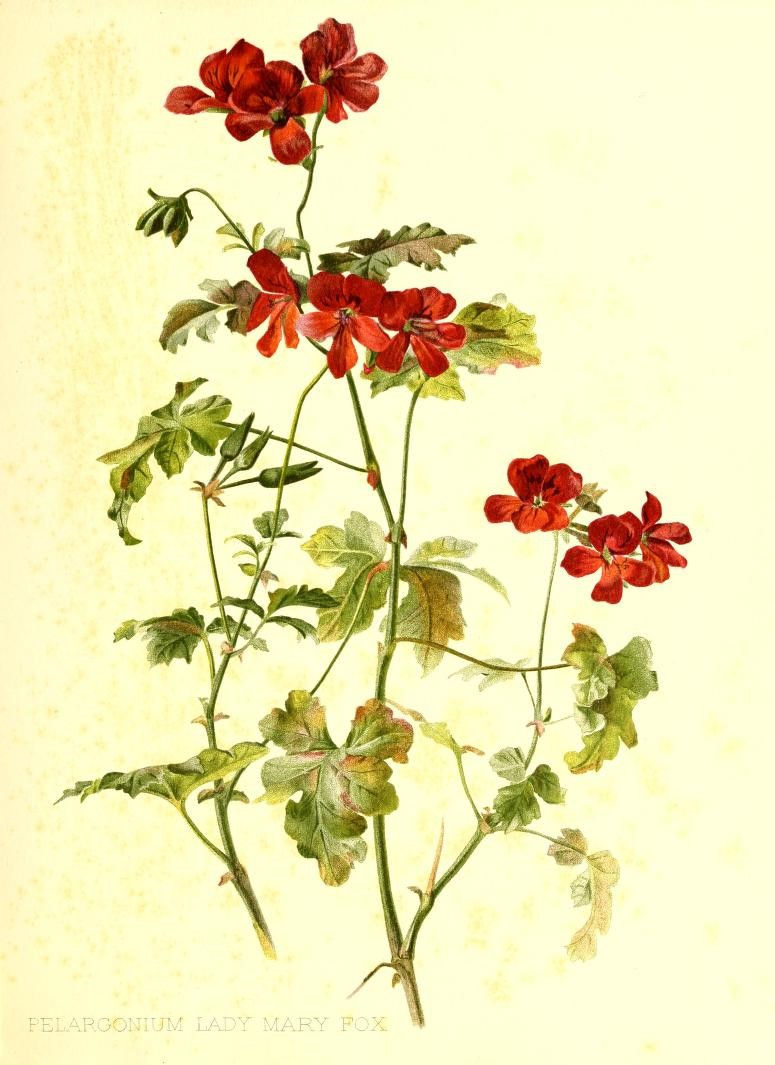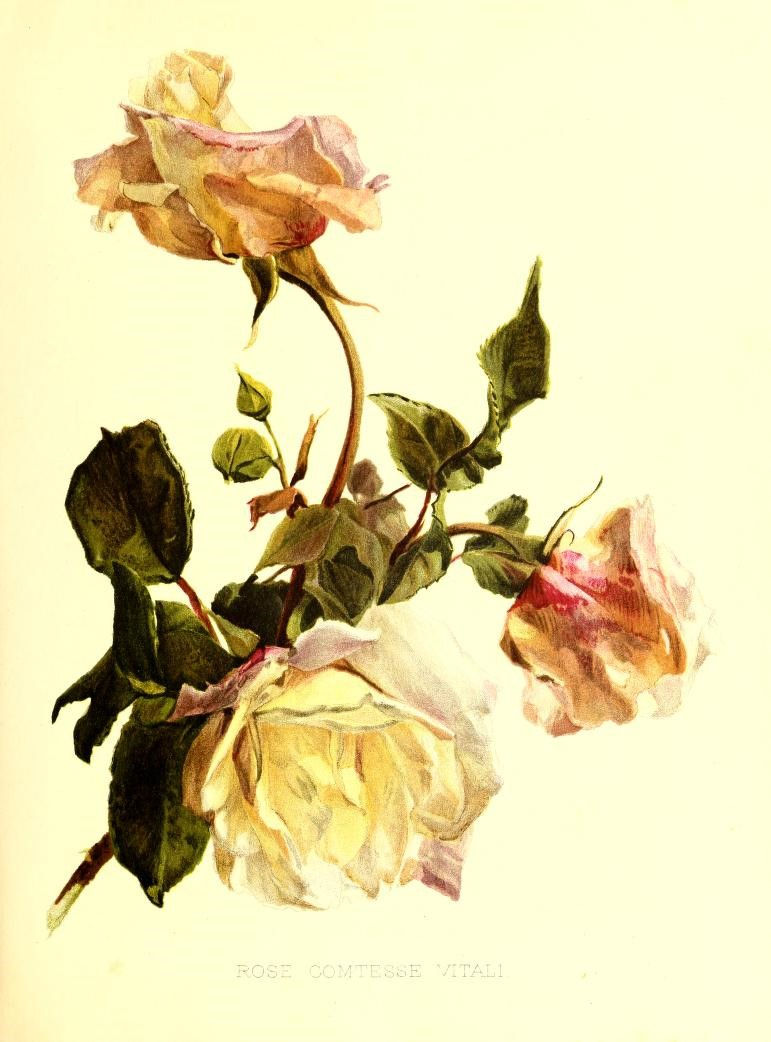William Robinson's monthly journal: 'Flora and Sylva' (1903-1905)
- gardenhistorygirl
- Sep 28, 2023
- 7 min read
Updated: Dec 2, 2025

‘Group of Hybrid Iris: 1. Psyche, 2. Charon, 3. Iphigenia'. Coloured plate from a drawing by H.G. Moon, of flowers sent from Haarlem. From 'Flora and Sylva', vol. 3, 1905
This month, I’d like to introduce you to Flora and Sylva a short-lived publication edited, printed and published by William Robinson, who dominated the UK horticultural press for some years with his high circulation titles The Garden and Gardening Illustrated. Flora and Sylva first appeared in April 1903, with the last issue published in December 1905. [See Notes for a link to a brief video of Tom Coward, the current Head Gardener at Robinson's home, Gravetye Manor, discussing his legacy.]
Photograph of William Robinson in later life, courtesy Gravetye Manor Hotel

Robinson (1838-1935) gave up the editorship of The Garden magazine in 1900 and, over the next few years, devoted his time, and money, on the creation of a beautifully produced journal which concentrated on trees and shrubs, rather than flowers – the outcome being Flora and Sylva. It was an upmarket, monthly deluxe publication full of articles by well-known figures in the world of horticulture, particularly noted for its coloured plates by the artist, Henry Moon.
Robinson’s description of the new journal appeared on the front page of each annual volume:
A Monthly Review for Lovers of Garden, Woodland, Tree or Flower; New and Rare Plants, Trees, Shrubs, and Fruits; the Garden Beautiful, Home Woods, and Home Landscape. Edited by, and Printed and Published by W. Robinson, Author of The English Flower Garden, Alpine Flowers for Gardens, and The Wild Garden.

In the Foreword of the first issue in April 1903, Robinson advised his readers that, as a lover of trees, “it struck me that periodicals of this kind had always been over much devoted to flowers and plants as distinct from trees and shrubs, while every day of my life I see more and more the beauty and value of the tree. So I married FLORA to SYLVA – a pair not far apart from Nature, only in books”. He also advised that the journal would use good quality paper (he sought out paper mills that still made real paper), “a wood-engraver who understood my good artist’s drawings”, and the “best colour-printer in Europe”.
Interestingly, I've only recently discovered that Robinson had an earlier attempt at publishing a journal more specifically about trees and woodlands. While researching Castlewellan in Northern Ireland [see Castlewellan Part 3: Thomas Ryan -– a Head Gardener's Story], I came across a publication I'd not heard of before, Woods and Forests. It's not available on-line and, as I could find no information about it, made an enquiry to the RHS Lindley Library. They advised me that it was a Robinson periodical, first published in 1883 but later incorporated into his journal The Garden in 1886. It seems to have been a relatively cheap gardening paper, rather than an expensive publication like Flora and Sylva, but presumably did not prove financially viable.
‘Some New Narcissi 1. ‘Lord Kitchener’, 2. ‘Dewdrop’, 3. ‘The Fawn’, 4. ‘Sunbeam’. Coloured plate from a drawing by H.G. Moon. From 'Flora and Sylva', vol. 3, 1905

The ”good artist” mentioned by Robinson was Henry Moon (1857-1905). Moon had joined Robinson’s art team at The Garden in 1880 creating most of the magazine’s coloured plates [you will have seen several of them in some previous blogs of mine]. He then joined Flora and Sylva, where he produced highly decorative chromolithographed plates [see Notes] of the finest quality, in brilliant colour on Robinson’s promised good quality "soft white, thick” paper. Each sheet measured 9 ¼ inches wide by 12 ¼ inches long and depicted plants in the collections of prominent botanical gardens, country houses, and nurseries, such as Kew Gardens, Gravetye Manor, and Ellen Willmott’s Warley Place. The coloured plates became highly collectable.
However, Robinson also used other artists. For example, there are coloured plates by several women, although no detail is given about them. For example, this plate of Pelargonium 'Lady Mary Fox' by a Miss Mary Cameron.
'Pelargonium ‘Lady Mary Fox’. Coloured plate drawn at Alexandra College, Dublin, by Miss Mary Cameron'. From 'Flora and Sylva', vol. 3,1905

Flora and Sylva included articles by William Robinson on the cultivation and uses of trees and shrubs and, as one of the most respected voices in the horticultural world, he was also able to command articles from amongst his wide circle of friends.
This circle included nearly all the leading botanists and horticulturists of the day, and articles can be found from such eminent horticulturists [often notable tree and shrub experts] as Augustine Henry, W.J. Bean of Kew [author of the famed book Trees and Shrubs Hardy in the British Isles] and Maurice de Vilmorin; plant-hunters such as Reginald Farrer and Ernest Wilson; head gardeners Thomas Ryan of Castlewellan in Ireland [see my series of posts on Castlewellan] and Alwin Berger of La Mortola [Sir Thomas Hanbury's garden in the south of France]; Irish horticulturist W.E. Gumbleton; R. Irwin Lynch of the Cambridge Botanic Garden, as well as foreign nurserymen such as John Hoog and C.G. Van Tubergen from Haarlem in Holland. And despite being a life-long batchelor, Robinson’s personal and professional acquaintances also included such notable women as Gertrude Jekyll, Ellen Willmott and Viscountess Wolseley, as well as the American landscape architect, Beatrice Farrand.
There are also articles about flowering plants, often exotics of the time such as dahlias, cannas, pitcher-plants, or hot-house plants such as Brazilian spider-flowers (Tibouchina). But it also covered more common place plants such as roses and primulas – which also often had interesting stories.
'Rose Comtesse Vitali'. Coloured plate from a drawing by H.G. Moon from a specimen at Gravetye Manor. From 'Flora & Sylva', vol. 2, 1904

For example, the illustration below of the large-leaved primrose (P. megasaefolia), accompanied an article which explained that the plant, from the Black Sea region, had been known to botany from the mid-1880’s. However, it had only been in cultivation for a few years at Henri Correvon’s Swiss nursery, Jardin d’Acclimatation, from where it was sent to Ellen Willmott at Warley Place. Willmott showed it at one of the RHS's fortnightly shows in 1901, where it received an Award of Merit.
‘Primula megasafolia'. Coloured plate from a drawing by H.G. Moon from a specimen at Warley Place. From 'Flora and Sylva', vol. 2, 1904

Reviews of Flora and Sylva in the horticultural press
In April 1903, The Garden described the contents of the new monthly journal as “miscellaneous notes, short articles, and longer monographs on plants of garden interest”, with topical articles on current developments in horticulture, forestry, arboriculture and urban parks. While The Gardeners’ Chronicle reported that “the newcomer has been awaited with eagerness, with coloured plates on thick paper”, with articles by "eminent horticulturists" from the UK, as well as Europe and America.
In January 1904, when the volume of journals for 1903 was published, The Gardeners Chronicle thought it would become a “precious possession by those endowed with artistic perceptions”. As already mentioned, the journal’s chief feature was its coloured plates, two per issue, mostly by Moon, which The Gardeners’ Chronicle described as “impressionist”, aesthetically pleasing, and life-like illustrations, rather than purely botanical drawings. High quality black and white 'engravings from photographs' were also a feature, such as this American Elm engraved from a photograph by a New York nurseryman.
‘An Old American Elm (Ulmus Americana)'. Engraved from a photograph sent by George H. Ellwanger. From 'Flora and Sylva', vol. 1,1903

Actual photographs, as well as engravings, were also occasionally used, such as this one below of a Crinum from Irish horticulturist W.E. Gumbleton's garden.
Photograph of ‘Crinum Powelli Album’ at Belgrove, Gumbleton's home in Ireland. From 'Flora and Sylva', vol.1, 1903

The journal also made an impression in the US: Country Life in America thought highly of Flora and Sylva describing it in January 1904 as “the most sumptuous periodical in the world devoted to gardening”. It described the wood engravings and coloured plates as of “a quality far above anything that is found in American periodicals devoted to horticulture”, and the coloured plates of flowers as the most artistic “regularly published in any magazine”.
End of the publication
Last issue of 'Flora and Sylva' published in December 1905

Despite such high praise, unfortunately Flora and Sylva was not to last. Although being the publication that probably gave Robinson the most personal satisfaction, it didn’t have the general appeal of many of his other magazines and journals – and the cost of production greatly outweighed its income from circulation. After only 3 years, Flora and Sylva became financially unsustainable, and readers were advised in the December 1905 issue that it would be the last, Robinson acknowledging that it was “published at less than its actual cost”.

In a parting message to his "many sympathetic readers", Robinson promised that Flora and Sylva would continue to be published – with much the same content, as a yearly volume. However, I've not found that this was ever the case.
The early death of Moon in October 1905 also contributed to its suspension, and Robinson dedicated the final volume to him. He also included an article describing Moon as the “best of flower painters and a landscape painter of fine accomplishment and finer promise”, lamenting his loss as being “keenly felt by all who knew him”.
Today, Moon’s coloured drawings from Flora and Sylva are still collectable. The internet has many reproductions for sale, as well as original plates – presumably torn from issues of the monthly journals, as individual issues are available with, and without, the plates. Annual volumes of Flora and Sylva are also available, and I have seen Volume 1 (1903) advertised at just over £300.
Worth a look...
Back in 2019, Sudeley Castle Library posted a brief video online showing their copies of Flora and Sylva being displayed for World Book Day. Definitely worth a watch, as you can see how large they are, and the quality of both the paintings and the paper. [See link in Notes.]
Notes:
Link to a short video with Gravetye Manor's current Head Gardener, Tom Coward, discussing William Robinson’s legacy with Sarah Eberle, designer of the Robinson-inspired 2019 Chelsea Flower Show garden for the Forestry Commission: Victorian gardener William Robinson inspires Forestry Commission's Chelsea Show Garden 2019 - YouTube
Chromolithographs: mention of chromolithographs crop up quite often in my blogs, so here's an explanation.

Sudeley Castle Library video: (6) Watch | Facebook
All 3 volumes of Flora and Sylva are available online here: v.1=no.1-9 (1903:Apr.-Dec.) - Flora and sylva - Biodiversity Heritage Library (biodiversitylibrary.org)



Comments